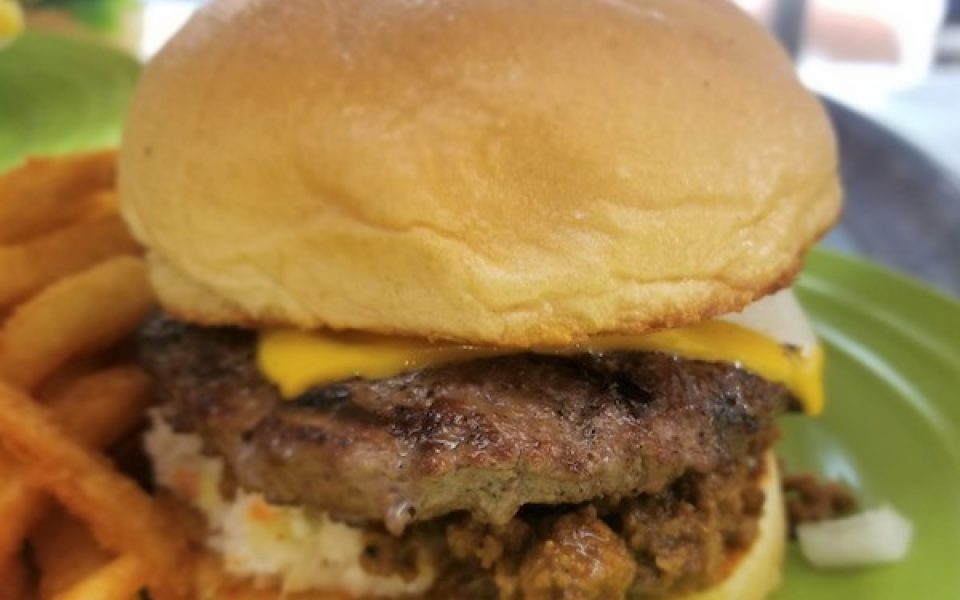by Brian Clarey
It’s coming back to us, that most quintessential of American dishes. Ground beef, courtesy of the domesticated cow, a triumph of agricultural civilization. The bun is a marvel of bread-making technology, a tiny loaf designed for a single purpose. We put cheese on them — American cheese, most of the time, which may not rank among the world’s great cheeses, but it’s ours, dammit. Atop that we may put whatever we want: ketchup, mayo, lettuce, mushrooms, special sauce, bacon… we’re Americans, and we want what we want. Sometimes we top our burgers with another burger, because that’s how we roll.
And over the Fourth of July weekend, we’ll be cooking them on our backyard grills, taking them down at picnic tables or with plates balanced on our laps, loading them up with chili and slaw, or cheese and bacon, or sliced apples and melted brie… the burger has come a long way.
Like so many other popular foods — hot dogs, ice-cream cones, cotton candy, Puffed Wheat, peanut butter and Dr. Pepper among them — the hamburger gained notoriety at the 1904 World’s Fair in St. Louis and quickly became an American staple.
By 1921, White Castle in Wichita, Kansas was selling them by the sack. The first McDonald’s opened in 1940, and by 1961, Ray Kroc had reduced this once noble sandwich into a commodity.
Today, McDonald’s sells 75 hamburgers every second.
But that despicable market share is being eaten into — pardon the pun — by the next wave of burger joints, where the new culinary aesthetic has given our national dish the consideration it deserves.
The hamburger revolution took root in Greensboro, with classic burger joints like Fincastle’s forming the vanguard and the more specialized Hops and Big Burger Spot following suit. Winston-Salem’s burger culture survives even in its finer restaurants, where seasoned chefs can have their way with it.
For our featured burgers we tried to stick to restaurants dedicated to the dish, or places known for their output in the hamburger realm. But great burgers are everywhere these days.
The ideal postmodern burger is a regional creature, locally sourced and customized to the market, subjected to the whims of fusion cuisine: peanut butter, sprouts and peppers; feta cheese, pepperoncini and tzatziki sauce; bacon and eggs.
In this way, the simple hamburger still has relevance 110 years after its birth, and it is still as fine a symbol for its country of origin as any other.
— BC
Join the First Amendment Society, a membership that goes directly to funding TCB‘s newsroom.
We believe that reporting can save the world.
The TCB First Amendment Society recognizes the vital role of a free, unfettered press with a bundling of local experiences designed to build community, and unique engagements with our newsroom that will help you understand, and shape, local journalism’s critical role in uplifting the people in our cities.
All revenue goes directly into the newsroom as reporters’ salaries and freelance commissions.


Leave a Reply